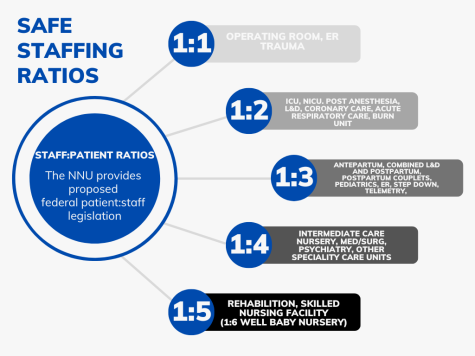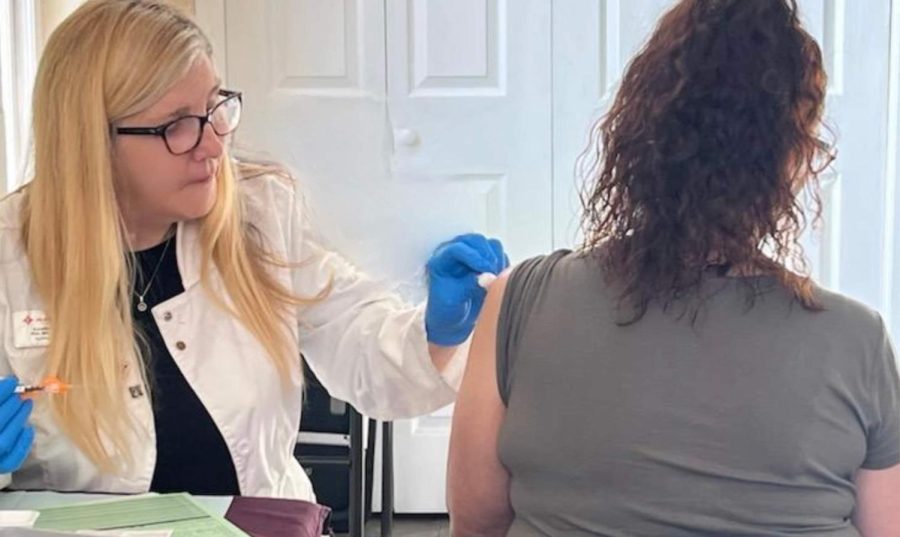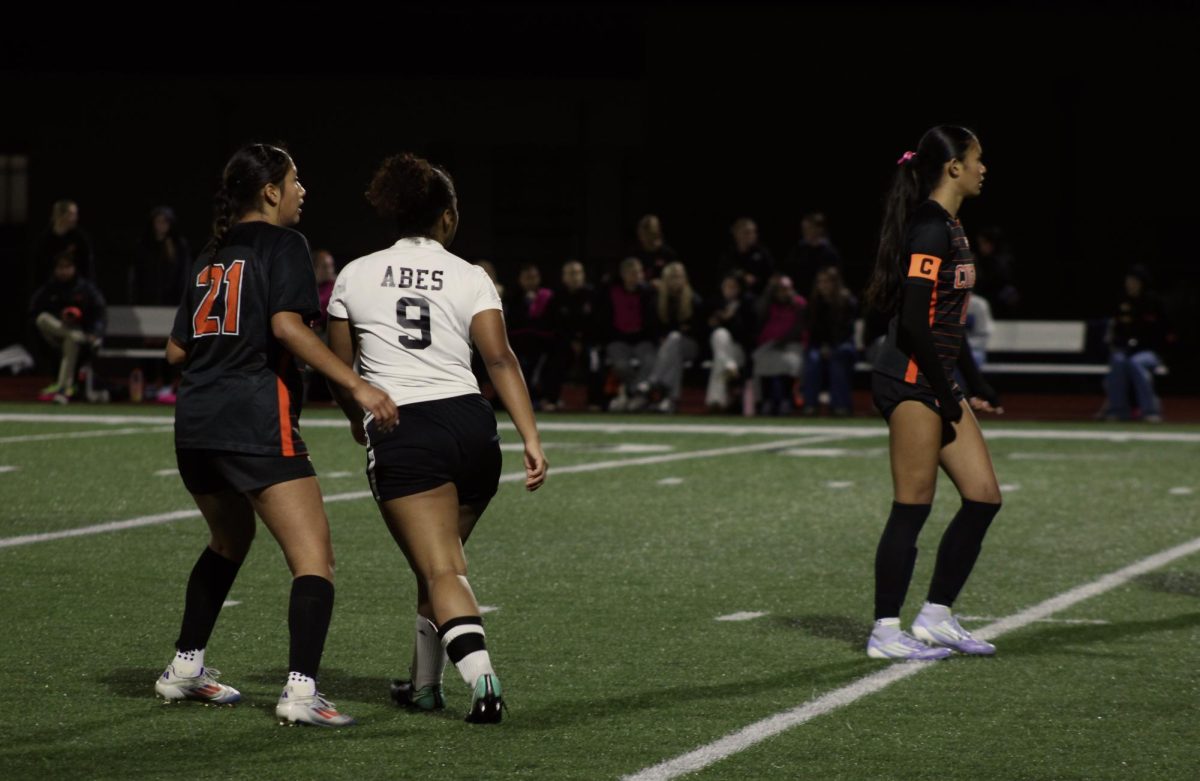Nursing After COVID-19
How staff shortages, low wages, and burnout have affected healthcare professionals after the spread of COVID-19
The spread of COVID-19 began in early 2020; it is no secret that the pandemic had a heavy impact on the world as we knew it. Among all of the communities affected, the healthcare industry took a hard hit, causing a substantial increase in employee burnout and staff loss.
During peak times of the pandemic, anxiety was at an all time high among patients and staff due to limited information about the virus.
According to Megan Sturm who has been working as a registered nurse since 2007, an immense fear for healthcare workers in the beginning of the pandemic was being unsure if the patient they were treating was positive for COVID-19.
“When you go into a room and take care of a patient, you want to be confident, you want to show that support, and you didn’t know if that person was contagious,” Sturm said. “You’d have that fear of going in there and taking it home to your own families, despite taking all of the precautions.”

Over 5,000 people died due to COVID-19 in 2020 alone and the death toll continues to rise, currently sitting at 6,761,693 total deaths worldwide; because of this anxiety has skyrocketed out of fear of dying and losing loved ones.
According to the World Health Organization, In the first year of the COVID-19 pandemic alone global prevalence of anxiety and depression increased by 25%.
People endured illness, isolation, loss of loved ones, and some even lost their own lives. The fear of someone you know or yourself being sick has caused a strain on mental health around the globe, according to Annette Cannon, who has been working as a Registered Nurse since 1976 and is currently working as the Jefferson County Coroner in Jefferson, Colorado.
“I think that there’s an increase of people in the emergency room because of anxiety and panic attacks over COVID-19,” Cannon said.
According to Sturm it was difficult to keep up with protocols and treatments that changed regularly.
“Protocols for COVID-19 that constantly changed, and different medications were used, different criteria for testing, you’d have to come in with a fresh slate of learning something new because it may have changed from the week prior,” Sturm said. “You were doing it every single day for two weeks straight and then you’d come in and you’d have to redo or relearn everything that you were doing or do it in a different way.”
The loss of healthcare employees during the pandemic was extensive – staff loss creates a larger staff-to-patient ratio, which can very quickly compromise patient care according to Jordan Ackron, who has been working as a registered travel nurse for the last five years.
“I’ve noticed that patients are getting more bed sores, not getting showers, have worse skin conditions and overall decline much faster now than pre COVID because they don’t want to pay us fairly, staffing ratios are terrible and it’s just a toxic work environment,” Ackron said.
The loss of staff and additional increase in patients, has put an extreme burden on healthcare workers. Most nurses hardly ever get a moment to rest, according to Eileen Randall, who has been working as a registered nurse for 10 years, two of which have been at St. Michael Medical Center in Silverdale, Washington.

Information courtesy of NNU.
“There’s no breaks in the 12 hour shift, you eat at your desk,” Randall said.
Since the spread of COVID-19 healthcare staff works longer hours and nurse schedules are more chaotic due to the rise of patients. According to Ackron, patient-to-staff ratios vary at different facilities. In some facilities he has had 12-15 patients at a time, at others he has had 30-40 patients at a time. This makes fulfilling other responsibilities difficult.
“It’s constant running. You never get a moment to sit down,” Ackron Says. “So you usually get behind on paperwork and charting by the end of your shift… You end up staying about 45 minutes to an hour after your shift. Putting everything you did into the system and making sure you documented it correctly, because if you don’t document it correctly and something happens, it falls on you and your license.”
Poor working conditions and hospitals being unwilling to pay staff fairly has led to a sharp increase in staff nurses leaving to become travel nurses, the average salary for staff nurses is $95,350 annually, but the average salary for travel nurses in Washington state (Washington is among the top 10 best states for travel nurses) averages at $134,080 annually.

According to the U.S. Bureau of Labor Statistics (BLS), around 195,400 job openings for registered nurses are projected from 2021-2031, and employment is supposed to increase by 16% by 2024.
Since the start of COVID-19 nurses have experienced an overwhelming burnout due to the loss of staff and unfair wages. Many nurses have developed anxiety and depression due to the intensity of the job and poor working conditions.
According to Cannon it, would benefit staff if hospital administration made mental health services accessible, as well as took a deeper look into paying staff fair wages.
“They should work on our staff and provide better benefits towards mental health care if it’s needed and look at the pay that nurses are receiving, especially compared to the CEO of the hospital who’s not there dealing with everything,” Cannon said.
According to The New York Times, hospital CEOs on average make $386,000 a year and hospital staff make around $237,000 a year.

“I think it’s evident they just need to pay nurses more so they can retain nurses,” Randall said. “I feel like a lot of the issue is hospitals want to make profit, and CEOs are getting bonuses, and it just seems really like a slap in the face to everyone working at the bedside.”
When COVID-19 first emerged the entire world was impacted. The healthcare community has taken the hardest hit. During the pandemic there was only so much healthcare professionals could do, but they did it all and more.




